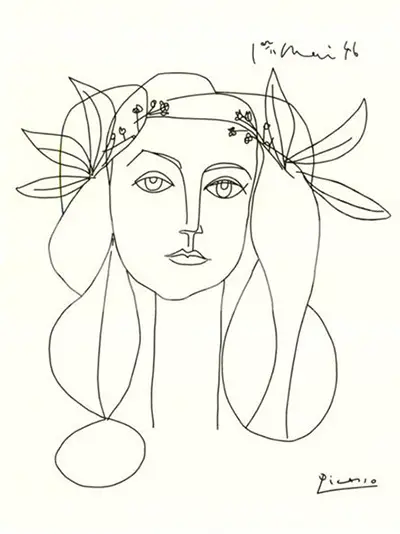The drawing featured here is also sometimes referred to as Head or Head of a Woman and was just one artwork from this extensive War and Peace series of the early 1950s.
Picasso produced a series of murals for a chapel in Vallauris, Southern France. They were themed on War and Peace, Leo Tolstoy's novel, and the village itself was communist-led, which matched with the artist's own political leaning.
Artist Pablo Picasso went to great lengths to ensure that his finished panel murals were execute precisely, creating around two hundred sketches and study drawings.
The Vallauris chapel opened in 1958 but stayed open only shortly. Many saw it was a political hot potato, potentially upsetting the ruling Gaullist Government.
Few famous artists have been as active in politics as Picasso, most notably with the likes of Guernica and his reflection on the Korean War. Indeed some of his work was directly aimed at drawing attention to his perceived attrocities in both the Spanish Civil War and in Korea.
In the modern age of mass media, with social media now spreading news faster and more freely, it is easy to forget how information would be far harder to get hold of in the early years of Post-WWII. Picasso had built a reputation and following which enabled him to communicate to thousands through his art, and was powerful enough to withstand most of the traditional institutions of that time.
The inspiration of Picasso's series of murals and study sketches is considered one of the most influential pieces of literature in global history. It took 30 years before the first translated version was released in the western world after the author's original publication in 1869.

